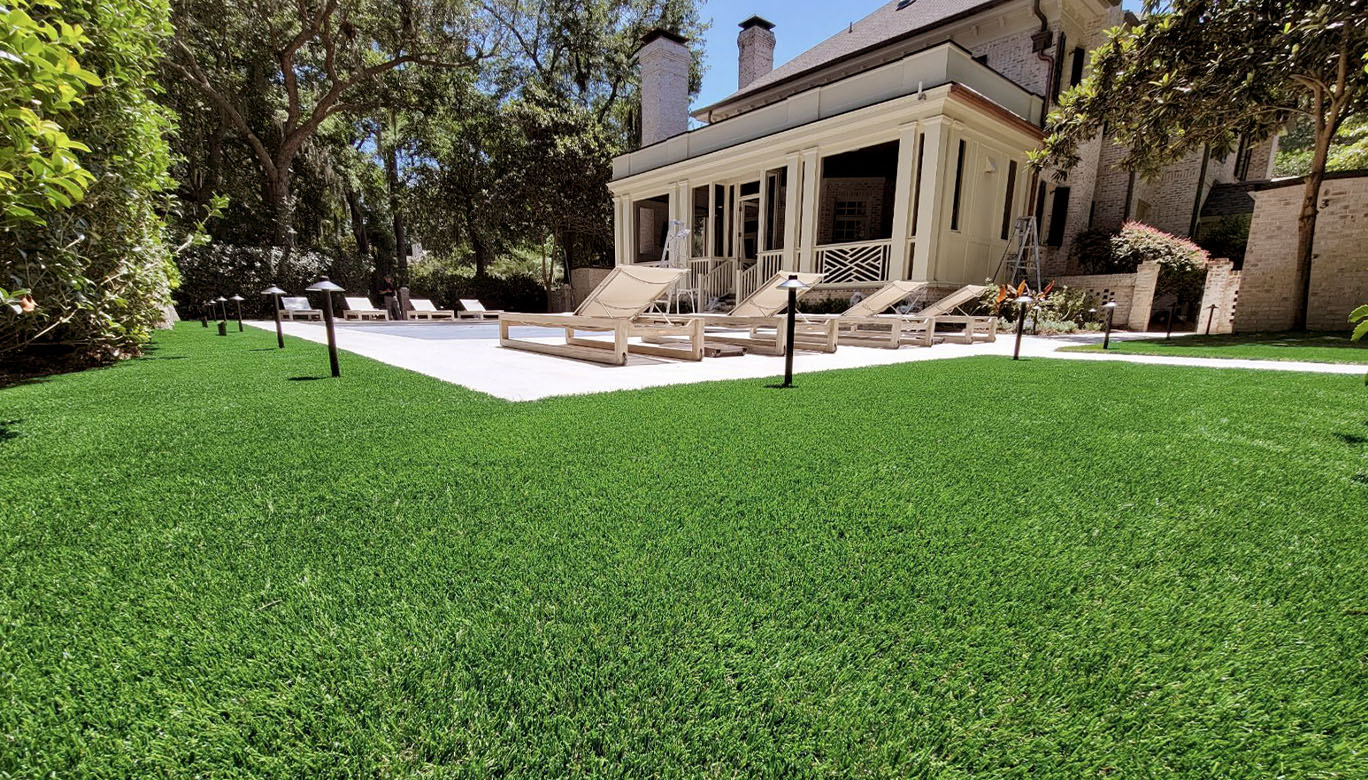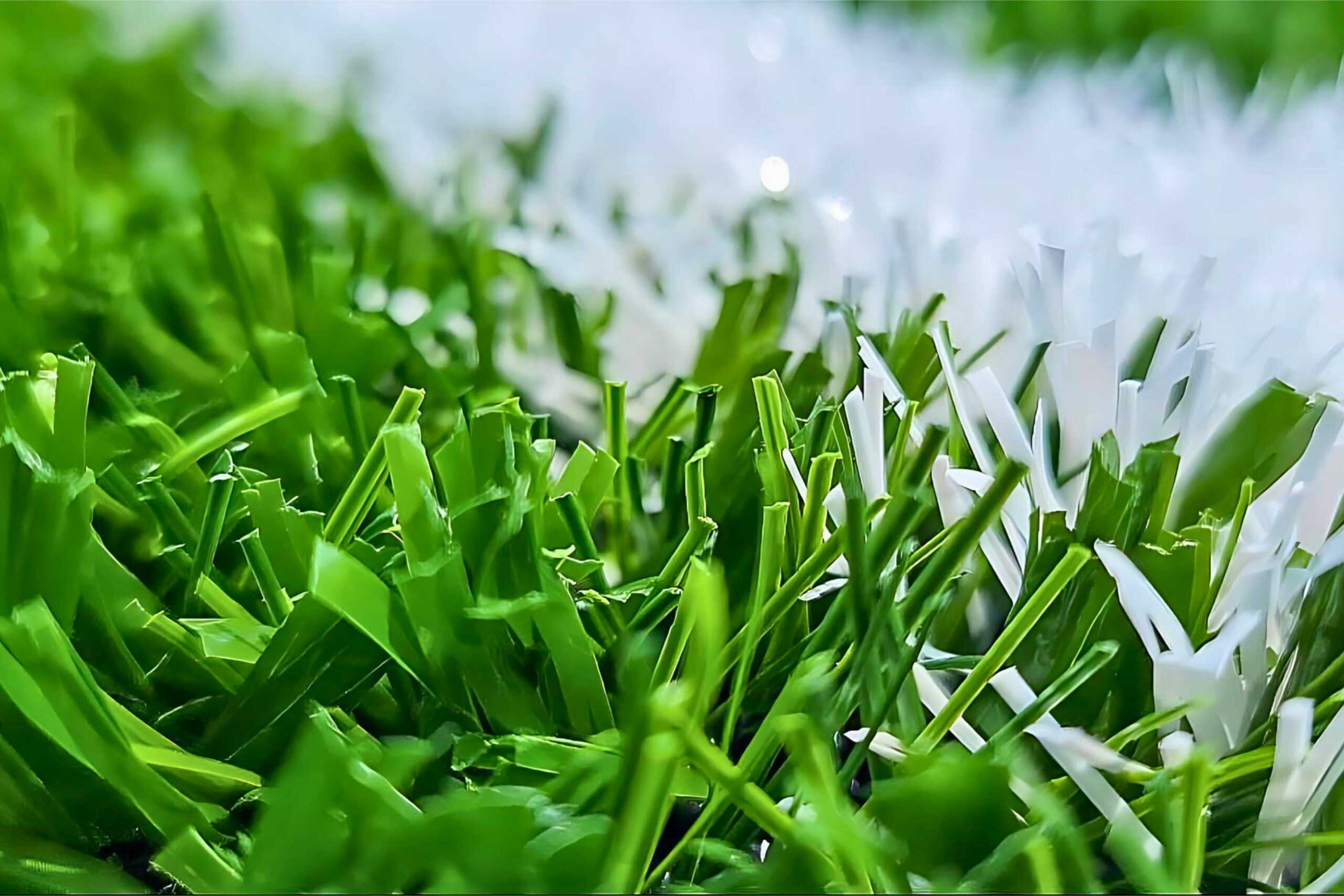Get a Flawless Lawn with Arizona Artificial Turf for Any Outdoor Space
Get a Flawless Lawn with Arizona Artificial Turf for Any Outdoor Space
Blog Article
Delve Into the Environmental Advantages of Opting for Synthetic Grass Solutions
The adoption of synthetic lawn solutions provides an engaging possibility to address pushing ecological obstacles. By considerably minimizing water usage and reducing the application of dangerous chemicals, these alternatives not just promote lasting landscaping yet likewise safeguard neighborhood ecological communities.
Water Conservation Advantages
One of the most significant benefits of artificial lawn is its ability to conserve water. Traditional grass lawns require substantial watering, particularly in locations susceptible to drought or water restrictions. On the other hand, synthetic grass does not need watering, dramatically decreasing the total need for water resources. This attribute is especially valuable in dry areas where water scarcity is a pressing worry.
By removing the demand for normal watering, synthetic grass contributes to sustainable landscape techniques and helps minimize the environmental influence of too much water usage. In addition, the preservation of water includes the decrease of drainage, which can bring about soil erosion and waterway contamination.
Furthermore, the installment of fabricated lawn enables homeowners and districts to assign water sources much more successfully, concentrating on important usages such as alcohol consumption water and agriculture. The change towards synthetic turf not just promotes liable water usage but also lines up with more comprehensive environmental objectives targeted at protecting natural deposits.
As neighborhoods progressively focus on sustainability, the water preservation advantages of artificial turf present a compelling situation for its adoption in household and business landscape design tasks.
Decreased Chemical Usage
The change to synthetic grass dramatically lowers the dependence on chemical therapies commonly made use of in natural lawn upkeep. Conventional grass administration generally involves the application of fertilizers, herbicides, and chemicals to promote development and control insects. These chemicals can position dangers to human health and wellness, local wild animals, and the setting, adding to soil and water contamination.
In contrast, artificial lawn removes the demand for these harmful compounds. By minimizing the launch of synthetic compounds right into the environment, artificial grass promotes much healthier soil and water systems.
In addition, the absence of chemical drainage connected with synthetic lawn installations helps secure neighborhood rivers from contamination, sustaining marine life and keeping biodiversity. Artificial turf companies phoenix. As communities significantly prioritize lasting practices, selecting synthetic grass offers a sensible remedy that straightens with environmental conservation objectives. With this shift, homeowner can enjoy lavish eco-friendly rooms without compromising ecological health and wellness, leading the way for a more lasting future
Lower Carbon Footprint

Furthermore, the installation of man-made turf can cause substantial water preservation. All-natural grass require significant quantities of water for irrigation, which not only includes to the carbon impact linked with water extraction and therapy yet likewise pressures regional water resources. In comparison, synthetic grass needs very little upkeep, requiring no watering, thereby significantly decreasing water use and its associated energy costs.
In addition, the durability of synthetic grass adds to its decreased carbon effect. With a life-span of up to 15 years or more, the requirement for constant substitutes is lessened, causing much less waste and lower power consumption in production and dealing with conventional lawn alternatives. On the whole, synthetic grass provides a lasting option for ecologically conscious landscaping.
Habitat Conservation
Environment preservation is a crucial factor to consider in the debate over landscape design selections, particularly when comparing man-made grass to all-natural turf. Natural lawn yards usually need substantial maintenance, including the use of herbicides, plant foods, and pesticides, which can detrimentally influence local ecosystems. These chemicals can leach into the dirt and rivers, damaging native vegetation and animals and interrupting neighborhood habitats.
In comparison, synthetic grass presents an opportunity to lower the eco-friendly footprint of landscape design. By selecting artificial yard, house owners can decrease the disruption of all-natural habitats associated with standard grass treatment practices. Synthetic grass removes the requirement for dangerous chemicals, thus securing nearby wildlife and maintaining the stability of bordering environments. In addition, the installation of synthetic grass go to my site can cause the conversion of previous turf areas right into even more biodiverse landscapes, such as pollinator yards or native plant locations, which can sustain local wildlife.
Ultimately, the shift to synthetic grass not only saves water and decreases maintenance initiatives yet likewise fosters an extra harmonious connection between human activities and the all-natural setting, promoting environment conservation in the procedure.
Long-Term Sustainability
Long-lasting sustainability is a crucial consider assessing the benefits of man-made grass over conventional lawn yards. Among one of the most significant benefits of synthetic grass is its longevity; it can last up to 15-20 years with very little upkeep, whereas all-natural lawn needs regular reseeding and substitute. This longevity reduces the need for continuous sources, such as water, fertilizers, recommended you read and chemicals, which are essential for maintaining a healthy and balanced yard lawn.
Furthermore, artificial turf adds to a reduction in carbon exhausts connected with yard care equipment. Traditional lawns typically require gas-powered mowers, trimmers, and blowers, all of which contribute to air contamination. Turf installation phoenix az. On the other hand, artificial turf removes the need for such tools, advertising a cleaner setting
Additionally, the production of man-made turf increasingly uses recycled materials, boosting its sustainability profile. As producers embrace green practices, the environmental footprint of synthetic grass proceeds to decrease.

Verdict
The fostering of synthetic grass solutions presents significant ecological advantages, including substantial water preservation, decreased reliance on dangerous chemicals, and a reduced carbon impact. Fabricated lawn help in maintaining natural habitats by lessening land disruption and promoting long-lasting sustainability with the usage of resilient products. Jointly, these variables underscore the potential of man-made lawn to contribute positively to environmental health and supply a sensible alternative to conventional landscape design practices in a progressively resource-conscious world.
In contrast, artificial grass does not require watering, substantially minimizing the total need for water resources. By reducing the release of artificial my explanation compounds into the ecosystem, synthetic grass advertises much healthier dirt and water systems.
Furthermore, the setup of synthetic turf can result in significant water preservation. In comparison, man-made grass needs very little upkeep, needing no watering, thereby dramatically decreasing water use and its associated energy costs.

Report this page